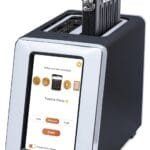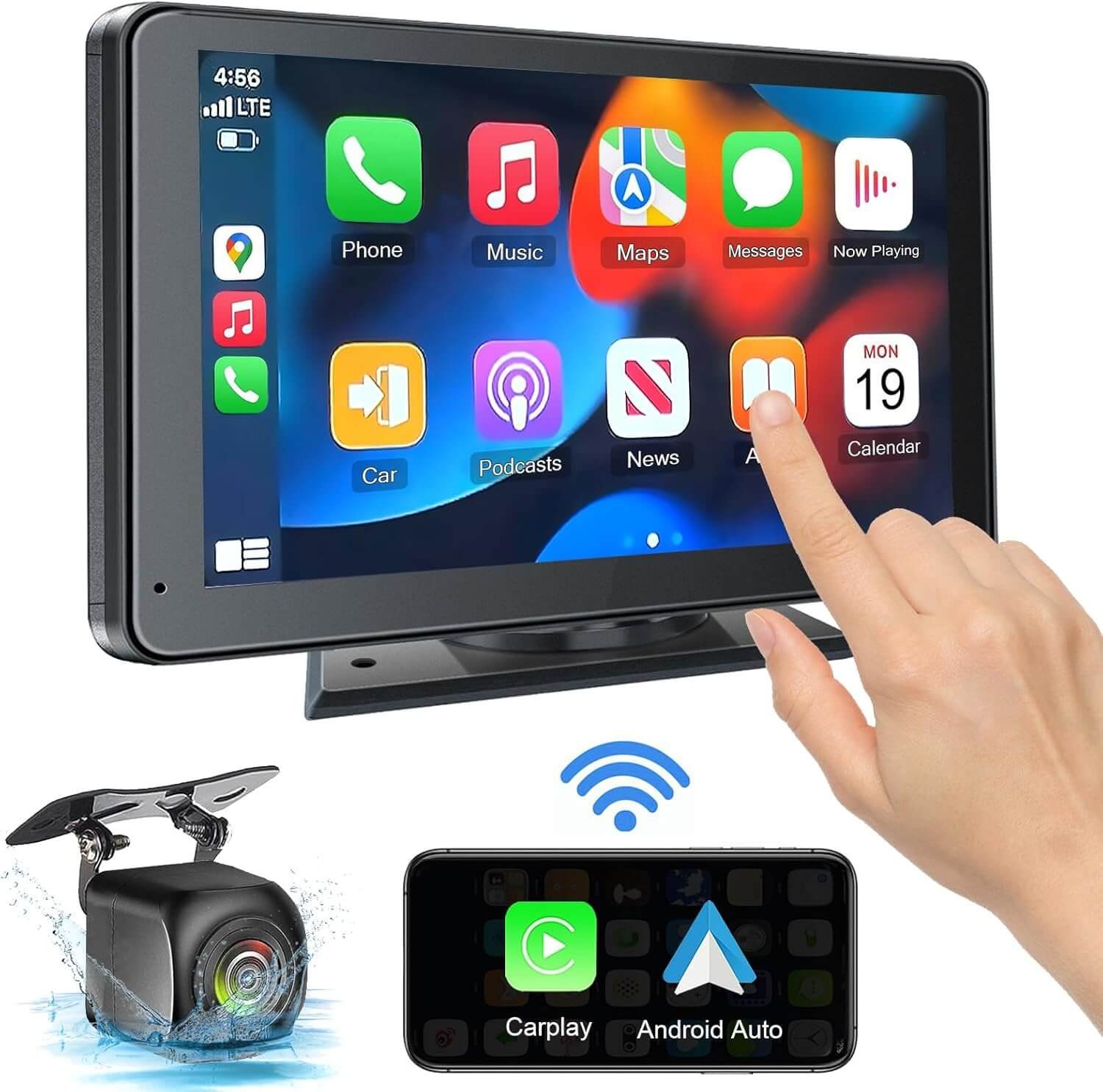Introduction to Wireless Guitar Systems
Wireless guitar systems have emerged as a transformative solution for musicians seeking freedom of movement while performing. Designed to eliminate the hassle of cables, these systems transmit audio signals wirelessly, allowing guitarists to move freely on stage or in the studio without the restrictions imposed by traditional wired setups. The core purpose of a wireless guitar system is to maintain sound quality while providing the convenience of mobility, thereby enhancing the overall performance experience.
The advent of technology has led to significant advancements in wireless audio transmission. Many musicians now prefer wireless systems due to their ability to offer reliable connectivity and rich sound quality comparable to that of wired connections. As a result, budget wireless guitar systems have gained substantial traction among both amateur and professional guitarists alike. These affordable alternatives are designed to cater to the needs of a wide range of players, enabling them to enjoy the benefits of wireless setups without incurring exorbitant expenses.
One key advantage of using budget wireless systems is the reduction in cable clutter, which not only simplifies setups but also minimizes potential trip hazards on stage. Moreover, these systems often come equipped with features such as rechargeable batteries, extended range, and clear signal transmission, allowing musicians to engage with their audience while maintaining sound integrity. The growing popularity of budget wireless guitar systems signifies a shift in how musicians approach performance and practice. By adopting these innovative solutions, guitarists can enhance their creativity and expression, showcasing their skills without the encumbrance of wires.
Sound Quality: What to Expect from Budget Systems
When exploring budget wireless guitar systems, sound quality is a pivotal factor that influences the overall user experience. While many musicians may assume that lower price points correlate with subpar audio performance, the reality is often more nuanced. Key elements such as frequency range, latency, and signal clarity significantly shape the sound quality one can expect from these systems.
Frequency range refers to the range of sound frequencies that a system can transmit effectively. Budget wireless guitar systems typically offer a frequency range between 20 Hz to 20 kHz, which is generally sufficient for most guitar applications. In comparison, premium systems may extend this range, offering greater fidelity and response. However, for casual players and smaller gigs, budget systems often provide an acceptable sound that captures the essential tones of the instrument without notable distortion.
Latency, the delay between the input and output of sound, is another critical factor affecting performance. Budget wireless systems usually have higher latency than their premium counterparts. Latency levels of around 10-15 milliseconds may not significantly impact your playing experience, particularly for rhythmic genres. However, for complex solos or fast-paced performances, even minimal lag can prove distracting. Musicians should assess their playing style and determine if the latency levels in budget systems meet their needs.
Signal clarity is where many budget systems vary widely. Generally, these systems employ analog transmission, which may introduce some noise and signal degradation. Although premium systems often utilize digital transmission for greater clarity and range, this does not mean all budget options are ineffective. Careful selection based on user reviews and specifications can help find a budget system that minimizes noise and maintains sound integrity.
Ultimately, while budget wireless guitar systems may not always match the sound fidelity of higher-end models, they can still offer satisfactory performance for many players. Understanding the factors influencing sound quality will enable musicians to make informed decisions about their options.
Types of Use for Budget Wireless Guitar Systems
Budget wireless guitar systems have gained popularity due to their versatility and convenience in various scenarios. One of the most common uses of these systems is during live performances. Musicians appreciate the freedom to move around the stage without being tethered to an amplifier, allowing for a more dynamic and engaging performance. The reliability and sound quality of budget wireless systems can be adequate for smaller venues, making them a practical choice for many performers.
Another significant scenario where budget wireless guitar systems are favored is during practice sessions. Musicians seeking to rehearse at home or in a studio often opt for these wireless solutions to eliminate the hassle of cables. This not only provides freedom of movement but can also prevent tripping hazards, contributing to a safer and more enjoyable practice environment. Additionally, the elimination of cords allows guitarists to experiment with different setups and locations without compromising their sound quality.
Recording setups also benefit from the integration of budget wireless guitar systems. While professional studios may prefer high-end units, many amateur recording artists find that budget options can deliver satisfactory sound quality for home demos or projects. These systems allow artists to capture their performance without being limited to the proximity of recording equipment, encouraging more creative expression.
Lastly, home use of budget wireless guitar systems is on the rise, especially for casual players who enjoy jamming or practicing at home. These systems provide a practical solution for users who want to keep their living spaces free of clutter while still maintaining quality sound. Overall, the diverse applications of budget wireless guitar systems make them a valuable investment for guitarists across varying levels of expertise.
Pros of Budget Wireless Guitar Systems
Budget wireless guitar systems have gained popularity among musicians for several compelling reasons. One of the primary advantages is the enhanced mobility and freedom of movement they provide during performances. Unlike traditional wired setups, which can restrict movement, these wireless systems allow guitarists to roam freely, engaging with their audience without being tethered to an amplifier. This flexibility is particularly beneficial in live settings where stage presence can significantly impact the performance.
Another key advantage is the ease of setup associated with budget wireless systems. Typically, these systems come with user-friendly instructions and are designed for quick configuration. Musicians can often plug in their instruments and start playing within minutes, eliminating the complexity often associated with traditional setups. This simplicity is especially attractive for those new to performing or recording, making wireless technology accessible to a broader range of users.
Compatibility is also an important factor in favor of budget wireless guitar systems. Many models are designed to work with various instruments, including electric guitars, basses, and even certain types of keyboards. This versatility means that musicians can utilize a single wireless system across multiple instruments, reducing the need for additional gear and the corresponding expenses.
When considering cost, budget wireless guitar systems frequently provide an exceptional balance between affordability and performance. While more expensive systems may boast advanced features and superior sound quality, many budget options deliver sound that satisfies the average guitarist’s needs without breaking the bank. Testimonials from musicians confirm that these systems perform reliably, making them a practical choice for both amateurs and seasoned professionals. In many cases, users have praised their efficiency during rehearsals and gigs, highlighting the value they bring to various musical scenarios.
Cons of Budget Wireless Guitar Systems
While budget wireless guitar systems offer significant advantages in terms of mobility and convenience, they also present several drawbacks that potential users should carefully consider. One of the primary concerns is the compromised sound quality. Many entry-level models may not deliver the same audio fidelity as their higher-priced counterparts, which can result in a less authentic reproduction of the guitar’s tonal characteristics. Musicians relying on nuanced sound may find these systems lacking in clarity and dynamic range.
Another issue often encountered with budget systems is battery life. Lower-cost models may use substandard batteries or lack efficient power management, leading to shorter operational times. Musicians may find the need for frequent battery changes, which can be disruptive during performances or practice sessions. The unpredictability of battery performance may deter users who require reliability without interruptions.
Interference problems pose another significant drawback associated with budget wireless systems. These devices often operate on crowded frequency bands, which can lead to unwanted noise or signal dropouts. In crowded or complex environments, such as live shows or recordings, these systems may struggle to maintain a consistent connection, impacting overall performance. Competitively priced systems may lack advanced features such as frequency hopping, which helps mitigate interference.
Durability also remains a concern with lower-end wireless systems. Many budget models are constructed from less robust materials, making them more susceptible to damage from drops or regular wear and tear. Musicians who perform frequently or travel extensively may find that these systems do not withstand the rigors of extensive use. These drawbacks serve as essential considerations for anyone contemplating the purchase of a budget wireless guitar system. By weighing these factors, users can make more informed decisions that align with their needs and performance expectations.
Top Budget Wireless Guitar Systems on the Market
In the ever-evolving landscape of musical equipment, budget wireless guitar systems have gained popularity due to their affordability and functionality. This section reviews some of the top budget systems available, catering to different needs and preferences of guitarists.
One noteworthy option is the GLX-D16 Digital Wireless Guitar System. Renowned for its exceptional sound quality and user-friendly interface, this system operates within a frequency range of 20Hz to 20kHz, providing a transparent audio experience. Priced around $400, it is targeted at both amateur and professional musicians, appreciated for its built-in rechargeable battery and automatic frequency management, which enhances reliability during performances.
Another commendable choice is the Xvive U2 Wireless Guitar System. This compact and lightweight model offers a range of up to 70 feet and a frequency response of 20Hz to 20kHz. With a price tag of approximately $150, it is suitable for guitarists seeking an economical and portable solution. The Xvive U2 includes a built-in rechargeable battery, enabling up to 5 hours of usage per charge, making it perfect for practice and small gigs.
The Shure GLXD16 delivers high-quality audio and is particularly favored among touring musicians. It features a frequency range of 20Hz to 20kHz and operates on the 2.4GHz bandwidth, ensuring interference-free performance. Priced around $400, this system includes a fast-charging lithium-ion battery that lasts for up to 16 hours, making it ideal for long shows and rehearsals.
Lastly, the Rode Wireless GO is a versatile option for guitarists who also engage in vocal performances or video work. With an easy setup and a price point of around $200, it supports up to 70 meters of range, featuring a built-in microphone and impressive sound quality. Its compact design appeals to musicians who prioritize portability without sacrificing performance.
These budget wireless guitar systems exemplify the balance between sound quality and affordability, enabling musicians to explore their craft with greater freedom and flexibility.
How to Choose the Right Budget Wireless System for Your Needs
Selecting the appropriate budget wireless guitar system is essential for optimizing your performance and overall sound quality. Several key factors should be considered when making your decision. Firstly, assess the range of the wireless system. Different systems offer various transmission distances, typically ranging from 30 feet to over 300 feet. If you perform in smaller venues, a system with a shorter range may suffice. However, if you plan to move around the stage frequently or perform in larger spaces, opt for a system with extended range capabilities to ensure consistent sound quality.
Compatibility with your instrument is another crucial consideration. Many budget wireless systems are designed for specific instruments, such as electric guitars or basses. Ensure that the system you choose can effectively connect to your guitar type, as some systems may require specific adapters or connectors. Additionally, consider the frequencies on which the systems operate. Some wireless systems operate on the 2.4 GHz band, while others might use VHF or UHF bands. Familiarize yourself with the potential interference in your performance environment, such as Wi-Fi signals, which may affect sound transmission.
Your personal playing style also impacts your choice. For musicians who prefer to move dynamically on stage, a lightweight and compact wireless system is ideal. Conversely, if you enjoy a more stationary performance, bulkier models may still serve your needs without hindering mobility. Additionally, pay attention to battery life; a system with a longer-lasting battery will ensure uninterrupted playtime during your gigs.
Ultimately, evaluating these factors will guide you to select the budget wireless system that best fits your specific needs and preferences, allowing you to enhance your performance without overspending.
Setting Up Your Budget Wireless Guitar System
Setting up a budget wireless guitar system requires careful consideration to ensure optimal performance and sound quality. The first step is to familiarize yourself with the components of your wireless system, which typically include a transmitter, receiver, and various connecting cables. Begin by charging or inserting batteries into both the transmitter and receiver, ensuring they are powered before any other configuration.
Next, position the transmitter on your guitar. It can often be directly plugged into the guitar’s output jack, but for systems with a belt pack, attach it securely to your waistband or strap. The goal is to keep the transmitter stable and minimize movement that could result in loss of signal. Make sure that the antenna on the transmitter isn’t obstructed to optimize transmission quality.
Now, focus on the receiver. It should be placed near your amplifier or audio interface for the best connectivity. Position it at a height and angle that minimizes obstructions from other equipment. Connecting the receiver to your amplifier can often be done via a standard 1/4-inch instrument cable. If your system allows for multiple receivers to be used, ensure they are spaced adequately to prevent signal overlap.
When selecting frequencies, it is crucial to scan for open frequencies in your environment. Most wireless systems include a feature to automatically choose the best channel, but if you are manually selecting, avoid frequencies occupied by Wi-Fi networks, Bluetooth devices, or other electronics. This step is vital to reduce interference, which can impede sound quality.
After all connections are secured and frequencies selected, test the system by playing your guitar to check for clear sound transmission and adjust the volume levels accordingly. With the transmitter and receiver optimally set up, you can enjoy the freedom of movement that a budget wireless guitar system provides without compromising on sound quality.
Conclusion: Are Budget Wireless Guitar Systems Worth It?
When evaluating the question of whether budget wireless guitar systems are worth the investment, it is essential to consider several key factors. Firstly, sound quality is a significant aspect that cannot be overlooked. Many budget systems tend to prioritize affordability over audio fidelity, which may or may not meet the standards of professional musicians. However, modern advancements mean that some budget options offer surprisingly good sound quality, making them suitable for casual performers or hobbyists.
Additionally, the intended usage plays a crucial role in determining the value of these systems. For musicians who perform live regularly or desire flexible movement during practice sessions, a wireless system can greatly enhance their playing experience. On the other hand, studio musicians or those who primarily play at home may find that a wired connection suffices for their needs. The portability and ease of setup offered by wireless systems can provide a compelling advantage for those who prioritize convenience and mobility.
Furthermore, budget wireless systems often come with a set of pros and cons. Among the benefits are cost-effectiveness, ease of use, and the freedom to move around without being tethered to an amplifier. However, potential drawbacks such as limited range, interference issues, and shorter battery life may need to be considered. Ultimately, whether a budget wireless guitar system is a worthwhile investment largely depends on individual requirements and preferences. Musicians are encouraged to assess their specific needs, consider performance environments, and weigh advantages against limitations to make an informed decision.






















![Breville One-Touch CoffeeHouse Coffee Machine | Espresso, Cappuccino & Latte Maker | 19 Bar Italian Pump | Automatic Milk Frother | ESE Pod Compatible | Black [VCF107]](https://product-reviews-today.com/wp-content/uploads/2025/05/Breville-One-Touch-CoffeeHouse-Coffee-Machine.jpg)



